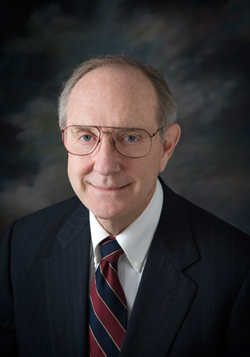By: Nat B. Read. Chair. 710 Freeway Coalition

A few years ago someone joked that the sun would burn out before the 710 Freeway was completed, so the project would have to be finished in the dark. No one’s laughing now, since the MTA voted on May 27, 2010, to end the debate, approve the first step and fund its $60 million environmental study. The process towards completing the study and building the freeway link has now been underway for over a year. Scoping hearings were completed earlier this year and the contract for performing the environmental study should be awarded this summer.
The legendary South Pasadena effort of decades ago to stop the freeway ultimately failed because the link simply had to be finished one way or another. It is the last remaining gap in the basic freeway core of Los Angeles County and the regional freeway system doesn’t work without it. A six-mile gap in any freeway, the I-10, I-5 or I-405, would cause the same kind of traffic chaos. In a natural disaster, the lack of a full 710 Freeway could be catastrophic. For example, if the north I-405 were impassible there would be no north-south freeway link between the I-5 and SR-55, a distance of 25 miles.

The gap in the 710 dominoes congestion as far north as Magic Mountain and as far south as Disneyland, slowing traffic on nine different freeways. A daily total of 100,000 vehicles are thrown onto freeways where they don’t belong and another 100,000 are put onto neighborhood streets in the West San Gabriel Valley.
For many years politicians were torn between South Pasadena’s pleas not to destroy its community fabric with a surface freeway and the regional need to reduce air pollution, relieve congestion, lessen use of un-replaceable fossil fuels and reduce traffic deaths and accidents. Improvements in tunnel technology made the underground alternative viable, and politicians at last had a compromise that offered something to both sides. The tunnel was not as desirable to freeway proponents but, on the other hand, it preserved existing neighborhoods.
The environmental study will almost certainly favor a bored tunnel. The six-mile hole will be the longest highway tunnels in North America, probably the widest in the world, and as steep as the Grapevine, but longer. Funding is already identified for the overall multi-billion-dollar project. Measure R tax proceeds will contribute $780 million with the sale of Caltrans property in the corridor offering another $500 million or so. The rest will come from private financing, to be repaid with toll revenues, thus relieving taxpayers of this generation from footing the entire bill, and future generations from paying for ongoing maintenance and operations out of public coffers.
The environmental study will set the route and characteristics of the tunnel, and thus the cost. It will also decide whether to allow trucks. The prior EIS/EIR banned trucks with little protest by the trucking industry because virtually no port traffic comes north of the I-10. The heavy truck traffic seen on the south 710 goes mostly to the rail yards in Commerce (rail is the best long-distance conveyance) or peels off to the East towards Nevada. For the relatively few trucks headed north to Bakersfield or Ventura the I-5 saves six miles and avoids the 6.5 percent grade of the upper 710. Virtually all truck traffic headed due north from the I-10/710 interchange is local transportation, carrying groceries and goods to stores and homes. The new EIS/EIR will make a fresh determination on truck traffic.
Explosives are already banned in all California tunnels and earthquakes are not a major problem. It is safer to be in a tunnel during an earthquake than on the surface, as dramatized in the Loma Prieta temblor when the BART subway tubes under the Bay were undamaged, while bridges parted and freeways pancaked on the surface. Also, knowing where the Raymond Fault is helps designers engineer around quake impact.
The timetable pu ts completion about ten years away, perhaps 2021. Long before the sun burns out! ts completion about ten years away, perhaps 2021. Long before the sun burns out!
Nat B. Read
Read Communications
100 E. Corson St., Suite 200
Pasadena, CA 91103
Phone: 626-578-0705
Fax: 626-578-0706
www.natread.com
nat@natread.com

|